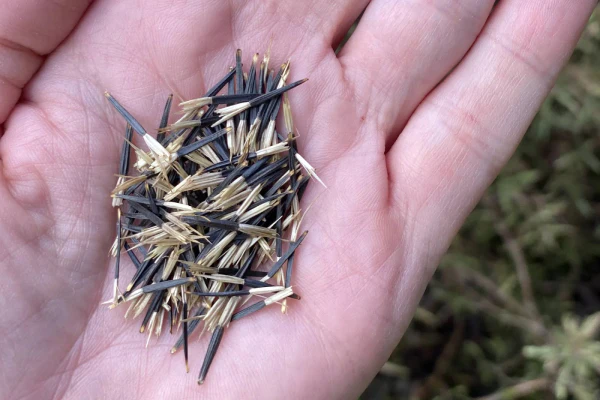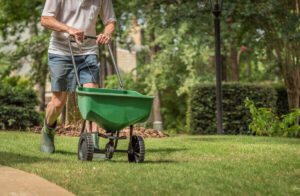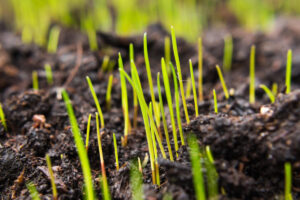Marigolds are vibrant, easy-to-grow flowers that bring color and charm to any garden. They are popular among gardeners due to their low maintenance and ability to repel pests naturally. Whether you want to add a splash of color to your garden beds or plant them in containers, marigolds are a great choice. In this guide, we’ll cover everything you need to know about planting and caring for marigold seeds.
Choosing the Right Marigold Variety
There are several types of marigolds to consider:
- African Marigolds (Tagetes erecta): Known for their large blooms and tall growth, making them ideal for garden beds.
- French Marigolds (Tagetes patula): Smaller and bushier, perfect for borders and containers.
- Signet Marigolds (Tagetes tenuifolia): Delicate foliage and small flowers, often used for edging and companion planting.
Marigold Varieties Comparison Table
| Variety | Height | Bloom Size | Best Use |
|---|---|---|---|
| African Marigold | 18-36 inches | Large | Garden beds |
| French Marigold | 6-12 inches | Small | Borders, pots |
| Signet Marigold | 8-12 inches | Tiny | Edging, herbs |
Planting Marigold Seeds
Follow these simple steps to plant marigold seeds successfully:
- Best Time to Plant: After the last frost in spring when soil temperature reaches at least 60°F.
- Prepare the Soil: Ensure well-draining, fertile soil enriched with organic matter.
- Sow the Seeds: Plant seeds about 1/4 inch deep and space them 6-12 inches apart.
- Watering Needs: Keep soil moist but not soggy; seeds germinate in 5-14 days.
- Sunlight Requirements: Marigolds thrive in full sun, needing at least 6 hours daily.
Caring for Marigolds
To keep marigolds thriving, follow these care tips:
- Watering: Allow the soil to dry between watering to prevent root rot.
- Fertilizing: Apply a balanced fertilizer every 4-6 weeks.
- Deadheading: Remove faded flowers to encourage continuous blooming.
- Pest Control: Watch for aphids and spider mites; use insecticidal soap if needed.
- Mulching: Apply mulch to retain moisture and suppress weeds.
Interesting Facts About Marigolds
- Marigolds can repel pests such as mosquitoes and nematodes.
- They symbolize positive energy and protection in various cultures.
- French marigolds are commonly used in companion planting to protect vegetables.
- Marigolds were first discovered in Mexico and have been cultivated for over 500 years.
Harvesting Marigold Seeds
To collect seeds for future planting:
- Allow the flowers to dry on the plant until they turn brown.
- Carefully remove the flower heads and extract the seeds.
- Store seeds in an airtight container in a cool, dry place.
Common Problems and Solutions
- Yellowing Leaves: Overwatering or nutrient deficiency; ensure proper drainage and fertilization.
- No Blooms: Insufficient sunlight or excessive nitrogen; ensure at least 6 hours of sunlight.
- Leggy Growth: Insufficient light; relocate plants to a sunnier spot.
Instructions for Planting Marigold Seeds
Marigolds are one of the easiest and most rewarding flowers to grow from seed. Their vibrant blooms, ability to deter pests, and low-maintenance nature make them a popular choice for gardens, borders, and containers. Whether you are a beginner or an experienced gardener, planting marigold seeds is a simple and enjoyable process. Follow these step-by-step instructions to ensure a successful marigold planting experience.
Step 1: Choosing the Right Time to Plant
Timing is crucial when planting marigold seeds. Marigolds thrive in warm weather, so it’s best to plant them after the last frost in spring when temperatures consistently stay above 60°F (16°C). In colder regions, you can start seeds indoors 4-6 weeks before the last frost to get a head start on the growing season.
Step 2: Selecting the Ideal Location
Marigolds love sunlight and need at least 6 hours of direct sunlight per day. Choose a location with full sun exposure to ensure healthy growth and abundant blooms. If planting in containers, ensure they are placed in a well-lit area such as a sunny patio or balcony.
Step 3: Preparing the Soil
For marigolds to thrive, they need well-draining, fertile soil. Follow these soil preparation tips:
- Loosen the soil to a depth of 6-8 inches to allow roots to establish easily.
- Mix in organic compost to enhance soil fertility and improve drainage.
- Ensure the soil pH is between 6.0 and 7.5, which is ideal for marigolds.
If planting in containers, use a high-quality potting mix to provide the necessary nutrients.
Step 4: Sowing the Seeds
Once the soil is prepared, it’s time to plant the marigold seeds:
- Spacing: Sow the seeds about 1/4 inch (6 mm) deep and space them 6-12 inches apart, depending on the variety.
- Light Covering: Lightly cover the seeds with a thin layer of soil or compost.
- Watering: Gently water the soil to keep it moist but not waterlogged.
Seeds typically germinate within 5-14 days, depending on the temperature and soil conditions.
Step 5: Caring for Marigold Seedlings
Once the seeds have germinated and seedlings appear, follow these care tips to promote healthy growth:
- Watering: Water the plants deeply once or twice a week, allowing the soil to dry slightly between watering.
- Thinning: When seedlings have two sets of true leaves, thin them to prevent overcrowding and allow proper air circulation.
- Fertilizing: Use a balanced, water-soluble fertilizer every 4-6 weeks to encourage healthy foliage and blooms.
Step 6: Protecting from Pests and Diseases
Marigolds naturally repel many pests, but they can occasionally attract aphids and spider mites. Inspect the plants regularly and use insecticidal soap if needed. Avoid overhead watering to prevent fungal diseases.
Step 7: Enjoying the Blooms
Marigolds typically start blooming within 8-10 weeks of planting. To extend the flowering period, regularly deadhead spent blooms to encourage new flowers. With proper care, marigolds can bloom from spring to fall.
By following these simple instructions, you can successfully plant and grow marigolds, adding vibrant color and charm to your garden. Happy planting!
Germination Time for Marigold Seeds: A Complete Guide
Marigolds are a favorite among gardeners for their bright, cheerful blooms and ease of growth. Whether planted in garden beds or containers, marigold seeds germinate relatively quickly under the right conditions. Understanding the germination time and factors influencing it can help ensure successful growth and vibrant flowers throughout the season.
How Long Do Marigold Seeds Take to Germinate?
Marigold seeds typically germinate within 5 to 14 days, depending on several factors such as soil temperature, moisture, and light conditions. Under optimal conditions—when the soil temperature is between 70-75°F (21-24°C)—seeds can sprout in as little as 5 days. However, cooler temperatures or inadequate moisture can extend the germination period to the higher end of the spectrum.
Factors Affecting Marigold Seed Germination Time
Several factors influence how quickly marigold seeds germinate. Ensuring the right conditions can help you achieve faster and healthier sprouting.
- Soil Temperature:
- Ideal Range: 70-75°F (21-24°C)
- If the soil temperature falls below 60°F (16°C), germination can be delayed or unsuccessful.
- Using a soil thermometer can help monitor conditions and provide the best environment for germination.
- Moisture Levels:
- Consistently moist (but not waterlogged) soil is essential for seed germination.
- Overwatering can lead to rot, while dry soil can prevent seeds from sprouting.
- Water lightly and regularly to maintain moisture.
- Light Conditions:
- Marigold seeds do not require direct sunlight to germinate; they prefer a lightly covered planting depth of about 1/4 inch (6 mm) in soil.
- After germination, provide 6-8 hours of sunlight daily for healthy growth.
- Soil Quality:
- Well-draining, nutrient-rich soil with good aeration supports faster germination.
- A soil mix containing compost can improve water retention without becoming too compacted.
- Seed Quality:
- Fresh, high-quality seeds have a higher germination rate compared to older seeds.
- Always purchase seeds from a reputable source and check expiration dates.
How to Speed Up Marigold Seed Germination
If you want to encourage faster germination, consider the following tips:
- Pre-Soak Seeds: Soaking marigold seeds in warm water for a few hours before planting can soften the seed coat and speed up sprouting.
- Use a Seedling Heat Mat: Maintaining consistent soil warmth can accelerate germination in cooler climates.
- Greenhouse or Indoors: Starting marigolds indoors in a controlled environment can help achieve the ideal temperature and moisture levels for faster germination.
Troubleshooting Slow Germination
If your marigold seeds are taking longer than expected to sprout, review these common issues:
- Cold Soil: Move pots or seed trays to a warmer location if outdoor temperatures are too low.
- Overwatering: Reduce watering frequency to prevent soggy soil.
- Poor Seed Quality: Test with a few seeds in a damp paper towel to check viability.
By understanding the germination process and providing optimal conditions, you can enjoy a thriving marigold garden with beautiful blooms in no time.
Growing Marigolds from Seed: Indoor & Outdoors
Marigolds are one of the easiest flowers to grow from seed, whether indoors or outdoors. Their vibrant blooms and low-maintenance nature make them a popular choice for gardeners of all skill levels. Marigolds not only add beauty to gardens and homes but also serve as natural pest deterrents, making them a beneficial addition to vegetable gardens. Whether you’re looking to start your marigolds indoors for an early start or sow them directly in your garden, this guide covers everything you need to know.
Benefits of Growing Marigolds from Seed
Growing marigolds from seed offers several advantages, such as:
- Cost-effectiveness: Seeds are more affordable than purchasing mature plants from nurseries.
- Greater variety: You can choose from different types and colors that may not be available as mature plants.
- Healthier plants: Growing from seed allows better control over soil quality and growing conditions.
- Extended blooming season: Starting seeds indoors can provide earlier blooms.
Choosing the Right Marigold Variety
Before planting marigold seeds, it’s essential to select the right variety based on your gardening needs. Some popular types include:
- African Marigolds (Tagetes erecta):
- Large, pom-pom-like blooms in yellow and orange shades.
- Suitable for garden beds and borders.
- Taller plants, reaching up to 36 inches.
- French Marigolds (Tagetes patula):
- Compact and bushy plants with smaller, delicate blooms.
- Ideal for containers, edging, and borders.
- Typically grows 6-12 inches tall.
- Signet Marigolds (Tagetes tenuifolia):
- Fern-like foliage with small, dainty flowers.
- Great for companion planting in vegetable gardens.
- Grows to a height of 8-12 inches.
How to Grow Marigolds from Seed Indoors
Starting marigold seeds indoors allows you to get a jump on the growing season, ensuring earlier blooms and stronger plants. Follow these steps:
1. Materials Needed:
- Marigold seeds
- Seed-starting trays or small pots
- High-quality seed-starting mix
- Spray bottle for watering
- Grow lights or a sunny window
2. Steps to Grow Indoors:
- Sow Seeds:
- Fill the seed trays with the seed-starting mix and lightly moisten the soil.
- Sow the seeds ¼ inch deep and gently cover with soil.
- Space seeds at least 1 inch apart for proper growth.
- Provide Light & Warmth:
- Place trays in a warm location with temperatures around 70-75°F (21-24°C).
- Use grow lights or place them on a sunny windowsill for at least 6-8 hours of light per day.
- Watering:
- Keep the soil consistently moist using a spray bottle.
- Avoid overwatering to prevent fungal diseases.
- Germination:
- Expect seeds to germinate within 5-14 days.
- Once seedlings develop true leaves, transplant them into larger containers if needed.
- Transplanting Outdoors:
- Harden off the seedlings by gradually exposing them to outdoor conditions before transplanting in the garden after the last frost.
How to Grow Marigolds from Seed Outdoors
Sowing marigold seeds directly in your garden is the easiest and most natural way to grow these vibrant flowers. Here’s how:
1. Choosing the Right Location:
- Pick a spot that receives at least 6 hours of direct sunlight per day.
- Ensure the soil is well-draining and rich in organic matter.
2. Preparing the Soil:
- Loosen the soil to a depth of 6 inches and remove any weeds or debris.
- Mix compost or a slow-release fertilizer to boost growth.
3. Planting Seeds:
- Sow seeds ¼ inch deep, spacing them 6-12 inches apart depending on the variety.
- Lightly water the area and keep the soil moist during germination.
4. Care After Germination:
- Once seedlings emerge, thin them to allow proper airflow and prevent overcrowding.
- Water deeply but infrequently, letting the soil dry between watering sessions.
5. Ongoing Maintenance:
- Apply mulch around plants to retain moisture and suppress weeds.
- Deadhead spent blooms to encourage continuous flowering throughout the season.
Common Problems and Solutions
Despite their hardy nature, marigolds can face a few challenges. Here are some common problems and how to tackle them:
- Leggy Growth:
- Cause: Insufficient sunlight.
- Solution: Provide more direct light or adjust positioning.
- Yellowing Leaves:
- Cause: Overwatering or poor drainage.
- Solution: Allow the soil to dry before watering again.
- Pests:
- Cause: Aphids, spider mites, and slugs.
- Solution: Use insecticidal soap or natural predators like ladybugs.
- No Blooms:
- Cause: Excessive nitrogen or lack of sunlight.
- Solution: Use a balanced fertilizer and ensure full sun exposure.
Companion Planting with Marigolds
Marigolds make excellent companion plants in vegetable gardens due to their pest-repelling properties. They help deter nematodes, aphids, and other harmful pests. Some great companion plants to grow with marigolds include:
- Tomatoes
- Peppers
- Cucumbers
- Beans
- Lettuce
Growing marigolds from seed, whether indoors or outdoors, is a simple and rewarding gardening project. Their bright, cheerful blooms provide long-lasting color, while their natural pest-repellent properties make them an excellent addition to vegetable gardens. By following the proper planting and care techniques, you can enjoy healthy marigold plants throughout the growing season.
Start planting your marigold seeds today and bring a burst of color and life to your garden!
Conclusion
Marigolds are an excellent addition to any garden due to their vibrant colors, easy maintenance, and pest-repelling properties. By following these simple steps, you can enjoy a thriving marigold display throughout the growing season.
References
- National Gardening Association: www.garden.org
- American Horticultural Society: www.ahsgardening.org
- USDA Plant Database: plants.usda.gov





